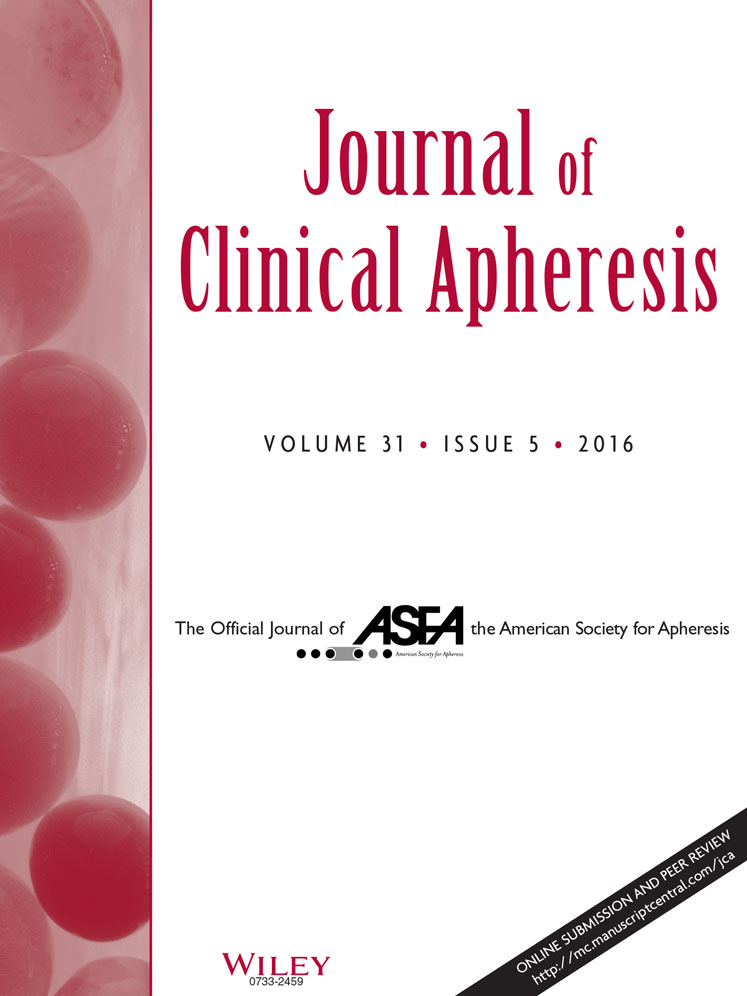Comparative evaluation of the depletion-red cell exchange program with the Spectra Optia and the isovolemic hemodilution-red cell exchange method with the COBE Spectra in sickle cell disease patients
Abstract
Background
This study aims to compare in patients with sickle cell disease (SCD), the technical performance and packed red blood cell unit consumption between the automated depletion/Red Blood Cell exchange (RBCx) program (Spectra Optia Apheresis System) with the isovolemic hemodilution (IHD)/RBCx procedure (COBE Spectra Apheresis System) in a routine clinical setting.
Methods
We retrospectively reviewed the data of 23 patients treated between October 2010 and August 2013 who underwent repeated RBCx on both apheresis systems for preventive indications. Each patient was their own control and had undergone two procedures on each system, totaling 46 sessions per group. On Spectra Optia, we performed the automated depletion/RBCx program. For COBE Spectra, we used a modified IHD/RBCx protocol. All patients had an initial 250 mL depletion offset by a 5% albumin prior to the exchange procedure, for the respective device, with leucodepleted Rh/Kell compatible and cross-matched RBC packs.
Results
All procedures were well tolerated except three mild febrile nonhemolytic reactions. Postprocedure hemoglobin S (HbS), fraction of cells remaining (FCR), procedure duration and processed blood and anticoagulant volumes were comparable in the two groups. However, the RBCx volume was significantly higher for the Spectra Optia group (+71 mL, P = 0.01), with no significant difference in the number of RBC units used.
Conclusions
Technical performance and packed RBC unit consumption were not compromised when switching from the COBE Spectra IHD/RBCx protocol to the depletion/RBCx protocol on the Spectra Optia. Tolerability was equal for both protocols. J. Clin. Apheresis 31:429–433, 2016. © 2015 Wiley Periodicals, Inc.




